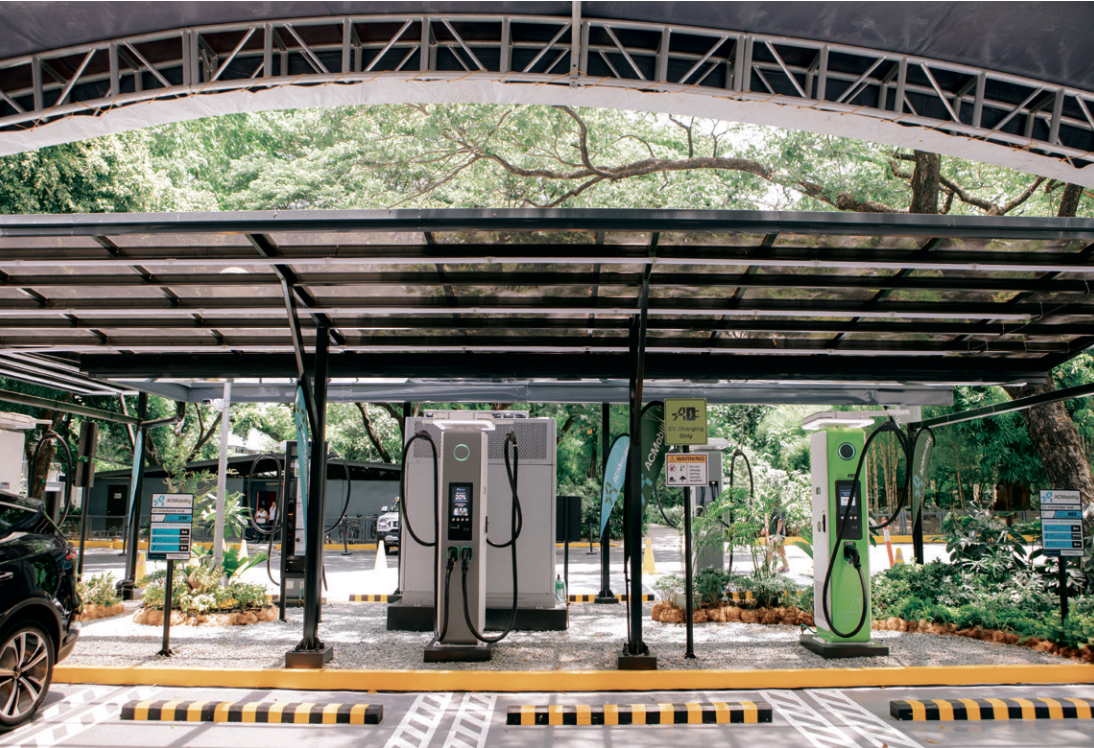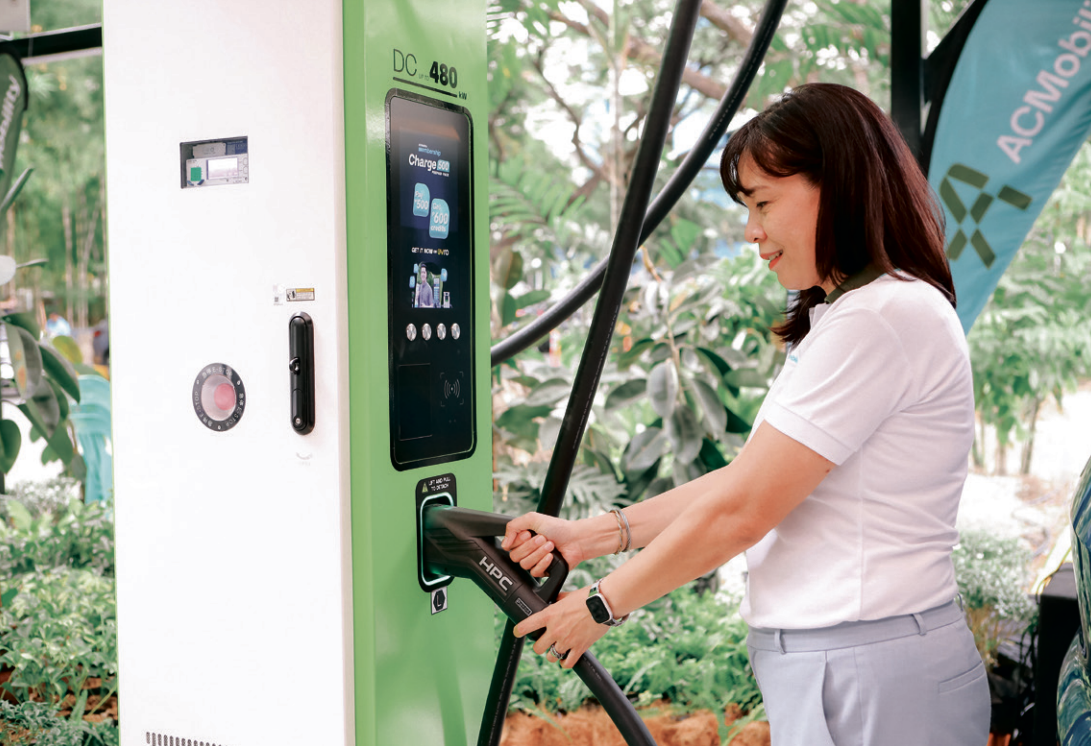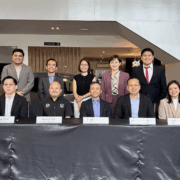EV Safety 101: How to Charge Your Vehicle Without Worry, Rain or Shine

Weather in the Philippines has become increasingly unpredictable. Weeks can quickly shift from scorching heat to days of continuous rain. These sudden changes present challenges to car owners, especially those with electric vehicles (EVs). One common concern is the safety of EV charging during extreme weather, particularly in heavy rains, floods, or high heat.
To help EV owners stay safe and powered up no matter the weather, ACMobility, a leading provider of EV charging solutions and infrastructure in the Philippines, shares a few essential tips for safe and smart charging during periods of extreme heat or heavy rains.
1. Check charging station availability and status first
When the weather swings from scorching heat to sudden downpours, being prepared makes all the difference. Before heading out, EV owners should first check the availability of charging stations in their area. This can be easily done through e-mobility platforms such as the Evro app, which features a Station Finder that shows all 240+ Department of Energy (DOE)-registered public charging stations nationwide. Apart from locating the nearest charging station, Evro also lets EV drivers check the status of each station in real time, manage their sessions, and process their payments, all in one app — helping them plan their trips with more ease and confidence.
2. Know your car’s condition and charging guidelines
Similar to using conventional Internal Combustion Engine (ICE) vehicles, it is essential for EV owners to check their vehicle manual for proper procedures, equipment compatibility, and emergency features, especially before charging. Brushing up on these basics could help save drivers from unnecessary risks, especially during unpredictable weather. Likewise, EV owners are encouraged to avoid charging in flooded areas as such may increase safety risks and affect vehicle performance. These precautions help ensure both the safety and longevity of the vehicle.
Likewise, it is also a must to check the condition of one’s vehicle if it has been exposed to deep floodwaters before charging. Drivers are advised to check for signs of water entry in the charging port, undercarriage or cabin, and monitor for any battery warning lights.
Extreme heat is another factor to mind. After long drives or use under intense heat, it is best to let the EV cool down and check its condition before charging. This prevents unnecessary strain on the battery, which, like a gas-powered engine, performs best when properly managed.
If anything feels unusual, whether due to rain or extreme heat, the safest option is to have the EV inspected at an authorized technician or service center before charging.

3. Use the right charger for your vehicle
EV owners should always ensure that the charger and plug match their vehicle’s specifications. The use of adapters or extension cords is strictly not allowed, as these can cause overheating, damage both the EV and the charger, or become fire hazards.
Universally, there are two main types of EV chargers: AC (alternating current) and DC (direct current). AC chargers, which provide up to 22kW of power, are the ones most widely available in the ACMobility network. For EVs equipped with faster on-board chargers, they can deliver a full charge in about three to four hours. For other vehicles, charging from 20 percent to 80 percent typically takes up to eight hours, depending on battery size and conditions.
Meanwhile, ACMobility’s DC chargers deliver 60kW, 120kW, 240kW and 480kW of power, and can charge an EV from 20 percent to 80 percent in just 20 to 60 minutes. The 60kW and 120kW units are referred to as Fast Chargers and are available in multiple locations nationwide, while the 240kW SuperFast and 480kW UltraFast chargers are currently available at the Corinthian Carpark in Makati City. Each charger type uses different connectors. ACMobility’s AC chargers support Mennekes (Type 2) and GB/T connectors while its DC fast chargers support CCS2 connectors.
If EV owners are unsure of connector compatibility, they can simply register their vehicles through the Evro app. The app will automatically display compatible connectors and identify charging stations equipped with the appropriate chargers for their specific vehicle.
4. Park and set up safely
EV owners are encouraged to position their vehicles properly and check their surroundings before charging. While ACMobility charging stations are built with proper grounding and level surfaces, drivers should still be careful when parking to ensure easy access to the charger. Before plugging in, it is important to inspect the charging station for any visible damage, signs of vandalism, or anything unusual. Any issue should be reported right away. When setting up, drivers should avoid stretching their charging cable across walkways, especially in wet or slippery conditions, to prevent accidents or wear. Once everything is securely in place, charging can begin safely.
5. If something feels off while charging, step back and stay safe
If something goes wrong while charging, such as sparks, unusual sounds, or system errors, EV drivers should not touch or forcefully unplug the charger. Use the Evro app to safely end the session if possible and move away from the vehicle. Report the issue to the station’s support team or emergency services. Once safe, drivers must ensure that the power source is switched off before any further action.
Engineered for safety together with our partners
Apart from Evro, ACMobility’s commitment to building safe and reliable charging stations nationwide is made possible through its strong partnership with Greenstrum, a leader in customized EV charging solutions for private, commercial, and industrial use. A subsidiary of ACMobility, Greenstrum handles the procurement, installation, and maintenance of both AC and DC chargers across the country. To ensure safety and efficiency, charging stations are inspected and maintained at least twice a year, with additional checks conducted as needed.
ACMobility’s charging stations are carefully designed with safety in mind and follow standards set by the Department of Energy (DOE), Department of Trade and Industry (DTI), and international guidelines. The company also works closely with Evro, Greenstrum, and its site partners to ensure that every station is safe, well-maintained, and fully operational. While ACMobility’s EV infrastructure is built for all-weather performance, EV owners are encouraged to exercise caution, especially during periods of extreme heat or heavy rains.
For any questions on how to use the Evro app, users may reach out through Evro’s in-app messaging service. For emergencies or immediate assistance at any ACMobility charging station, please call the ACMobility Helpline at (02) 7777-ACMo (2266).
For those interested in establishing an ACMobility charging station or exploring partnership opportunities, visit https://acmobility.ph/.

















